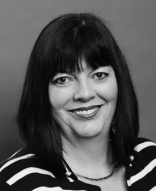Home › magazine › business reports › Smarter facilities management
Smarter facilities management
11th of May 2018Smart buildings, Internet of Things – both now familiar phrases to most of us. Their potential impact on how building services such as cleaning are delivered is still uncertain. What’s not in dispute however, is that the implications for facilities management will be far-reaching, and now global technology corporation Microsoft is exploring the possibilities to become involved in the sector. David Williams, business architect for the Microsoft Digital Applied Innovation Team talks to ECJ.
Across the globe, everyone is familiar with the Microsoft brand name, usually through the Windows operating system. The company is now much more than a software business however as David Williams, Business Architect for its Applied Innovation Team explains. “Microsoft is now a cloud-based company. Our currency is data. We help customers to either make money out of their data, or to improve their business in some way. And we fight for the privacy of that data.”
Having built the Azure global cloud platform Microsoft is now interested in helping businesses to gain insights from the data in buildings.
Most expensive costs
“As a company we have many of our own buildings worldwide, which we manage on a daily basis,” continues Williams. “so we ourselves have challenges in terms of FM and cleaning.”
At the Microsoft headquarters in Richmond, Washington, USA for example there are 140 structures on the site and 65,000 people going in and out of those buildings every day. “Functions such as heating, ventilation, cleaning and other facilities services are the most expensive running costs in buildings. We at Microsoft are not just focusing on the technology but on building platforms that are relevant and that create real solutions.”
Cleaning is an interesting area for Microsoft as it is a cost in any large building, and a very clear cost. “How to measure what a clean building is, how it impacts on how people are performing, improving the experience of people within a building – those are the areas we are focusing on. And data is the currency here – historically that data was very expensive, and not very long ago. Now it’s much more affordable and worth exploring.”
Williams gives the example of a typical office building. “Within that building there is a great deal of equipment, which is all producing data. In a new building there will be a data management system generating data. We take that and analyse it, looking closely at any problems. We can quickly make basic savings.
Most used areas
“Then we use analytics tools to go further. We build up a map of which areas people are using. For example why heat or clean areas that are not even being used? Wifi and infrared sensors can provide us with the data we need, along with apps people use to book meeting rooms,
room access codes, etc. A very accurate picture can quickly be built up of the most used areas.”
He continues: “ Our theory is we can use data to explore cleaning as a service. We identify exactly what areas need cleaning. Then the client pays for what has been serviced, a more on-demand approach.” And data generated by buildings can be shared and used across different functions Williams believes.
There are numerous opportunities for using smart technology as part of the cleaning and hygiene function within buildings, he says. “Let’s look at hand washing for example. Microsoft developed the X-Box so we have a great deal of expertise around gamification, the application of game design elements and game principles in non-game contexts - which could be one route to engaging washroom users and inspiring them to wash their hands.
“Or how about monitoring who is not washing their hands and then sending them a polite private SMS or email to prompt them? This could lead to more targeted training, and again a reduction in costs.”
Another possibility is the digitisation of cleaning trolleys. “This could be applied to monitor how much cleaning chemical is being used as the cleaner works their way around the building for example,” explains Williams. “We would gather data on how much is being used, whether the correct dosage is being used, analyse trends.”
Accurate forward planning
It’s this practical, useful application of smart solutions that makes prediction and forward planning a reality and which can then lead to more accurate budgeting emphasises Williams.
“Our over-arching objective is to use data as effectively as possible, to help our customers and partners be smarter in all aspects of building management,” he concludes.










